Xiaomi Redmi Note 9
$166 | 14990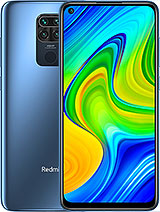
- 6.53" 1080x2340 pixels
- 48MP 1080p
- 3/4GB RAM MediaTek Helio G85
- 5020mAh Li-Po
Phone Finder
- Acer alcatel Allview Amazon Amoi Apple Archos Asus AT&T Benefon BenQ BenQ-Siemens Bird BlackBerry Blackview BLU Bosch BQ Casio Cat Celkon Chea Coolpad Cubot Dell Doogee Emporia Energizer Ericsson Eten Fairphone Fujitsu Siemens Garmin-Asus Gigabyte Gionee Google Haier HMD Honor HP HTC Huawei i-mate i-mobile Icemobile Infinix Innostream iNQ Intex itel Jolla Karbonn Kyocera Lava LeEco Lenovo LG Maxon Maxwest Meizu Micromax Microsoft Mitac Mitsubishi Modu Motorola MWg NEC Neonode NIU Nokia Nothing Nvidia O2 OnePlus Oppo Orange Oscal Oukitel Palm Panasonic Pantech Parla Philips Plum Posh Prestigio QMobile Qtek Razer Realme Sagem Samsung Sendo Sewon Sharp Siemens Sonim Sony Sony Ericsson Spice T-Mobile TCL Tecno Tel.Me. Telit Thuraya Toshiba Ulefone Umidigi Unnecto Vertu verykool vivo VK Mobile Vodafone Wiko WND XCute Xiaomi XOLO Yezz Yota YU ZTE
Xiaomi Redmi Note 9 Summary
This year's Redmi Note 9 series has three models, including Redmi Note 9, Note 9 Pro, and Note 9 Pro Max, of which Note 9 is the most affordable offering in the lineup. This product hasn’t made its way to India yet. In other markets, it comes in two memory configuration: 3GB RAM / 64GB internal memory priced at around Rs. 13,000 and 4GB / 128GB RAM internal memory priced at around Rs. 16,000 Thus, the base version of Redmi Note 9 is around Rs. 3,000 lower than the base version of Redmi Note 9 Pro.
Compared to similar products of other brands such as Galaxy A20s and Oppo A31, Redmi Note 9's configuration is still very impressive, a characteristic that Xiaomi has maintained for the Note line for years. However, if compared with two siblings in the lineup. The most-affordable Redmi Note 9 comes with many changes to match the price.
In comparison to the Note 9 Pro and Pro Max, you can easily recognize at least 7 changes: the material of the back, a slightly smaller screen, less-powerful processors, lower-resolution macro and selfie camera, and rear-mounted fingerprint reader. The main camera is still 48MP but the internal sensor is Samsung ISOCELL GM1, which is older than the Samsung ISOCELL GM2 sensor on the Note 9S.
Whether with such changes, Note 9 is still a good choice like the Redmi Note 9 Pro & 9 Pro Max?
Screen: natural color, looking slightly dark under direct sunlight
Redmi Note 9 has a 6.53-inch screen, slightly smaller than the 6.67-inch size of the two more-premium products. The screen resolution is still Full-HD + with a pixel density of 395 PPI. This is a big plus of Redmi Note 9 when most products in the same price range usually only have HD + resolution.
The screen is equipped with Gorilla Glass 5. Xiaomi offers users three color modes: automatic, saturated, and standard like AMOLED screens. In particular, the two modes Automatic and Natural color display with high accuracy, while saturation mode will push the color a little more. In addition to colors, this phone also has 3 color temperature options: default, warm, and cool.
In the default mode, the background of the Redmi Note 9 shows natural colors and the viewing angle is quite wide. However, the maximum brightness of the screen is not as high as Redmi Note 9 Pro and Note 9 Pro Max. So when taking photos or using your phone outdoors, you will find the screen a bit dark and difficult to see. This screen also does not support HDR like the two siblings.
Great Cameras
Redmi Note 9 has a rear 4-camera cluster consisting of a 48MP main camera, an 8MP ultra-wide-angle camera, a 2MP macro camera, and a 2MP secondary camera for portrait shots. On the front, the device has a 13MP camera for taking selfies. According to the app, the Redmi Note 9's 48MP main camera uses Samsung's ISOCELL GM1 sensor, which is older than the 48MP ISOCELL GM2 sensor on the Redmi Note 9 Pro.
By default, the main camera takes photos at 12MP resolution. You can also shoot at 48MP resolution. However, the difference between the 12MP and 48MP photos is not significantly different. Meanwhile, 48MP photos have a longer processing time and heavier image sizes. So for normal use, I recommend shooting in the default 12MP mode.
In terms of quality, photos taken from the main camera and wide-angle camera can be said to be good considering the price of the device. The image is quite detailed and the range of brightness is quite wide, the colors have a natural tendency. However, photos taken from both the main and wide-angle cameras share a common feature: the contrast and color saturation are not high. Turning on or off the AI context recognition mode didn't change much. This is easily noticeable in landscape shots. The sky in photos taken from both 48MP and ultra-wide 8MP cameras is often lighter than reality.
Performance: comfortable for basic tasks, not powerful enough to play heavy games smoothly
Redmi Note 9 is the first smartphone to use Mediatek's new Helio G85 chip. This chip is a slight upgrade to the graphics performance (GPU) of Helio G80. Helio G85 has 2 high-performance Cortex-A75 cores clocked at 2GHz and 6 energy-efficient Cortex-A555 clocked at 1.8GHz. The integrated graphics chip, Mali-G52, has a clock speed of 1GHz, slightly higher than the GPU on Helio G80 (950MHz). Along with Helio G85, Redmi Note 9 comes in 3GB / 64GB RAM and 4GB RAM versions.
On benchmarking apps, the 3GB RAM version of the Redmi Note 9 was tested and reached about 190,708 points on the Antutu v8.3.6, not too much difference compared to the Redmi Note 9 Pro (220,321 points). However, the GPU graphics benchmark of Redmi Note 9 is significantly lower than that of Snapdragon 720G on Redmi Note 9 Pro.
PUBG Mobile is not an easy challenge with the Redmi Note 9. Selecting high graphics quality, the game is unlocked at 40 fps but while playing, the frame mainly fluctuates 29-30 fps. According to Gamebench, the Redmi Note 9's frame stability is 82%.
Call of Duty Mobile limits the Redmi Note 9 to "low" image quality options and the "average" number of frames per second. When in the game screen, the number of frames per second is mostly over 50.
In general, the configuration of the Redmi Note 9 can allow users to play heavy games but is not as smooth and stable as the Redmi Note 9 Pro. However, it is reasonable considering the price of Rs. 14,000. Besides playing the game, the processor is stable for daily use.
Battery life
The battery is a strength of all three products of the Redmi Note 9 series. The battery has a capacity of 5020 mAh and supports 18W fast charging like the Note 9 Pro. In our battery test, watching movies, surfing the web, and playing games, the usage time of Redmi Note 9 is not much different than that of Redmi Note 9 Pro and Note 9 Pro Max despite having a different and less-powerful chipset.
The phone's full charge time is 30 minutes longer than the Redmi Note 9 Pro which also supports 18W fast charging but uses Qualcomm's fast charging technology. Specifically, the Redmi Note 9 takes up to 2:40 minutes to fully charge the battery with the included charger, of which the first half-hour charges 25% and 1 hour is about 46%.
Xiaomi Redmi Note 9 Full Specifications
- Dollas $166
- Rupee ₹14990
- Technology GSM / HSPA / LTE
- 2G bands GSM 850 / 900 / 1800 / 1900 - SIM 1 & SIM 2
- 3G bands HSDPA 850 / 900 / 1700(AWS) / 1900 / 2100
- 4G bands 1, 2, 3, 4, 5, 7, 8, 20, 28, 38, 40, 41
- Speed HSPA 42.2/5.76 Mbps, LTE-A
- Announced 2020, April 30
- Status Available. Released 2020, May 12
- Dimensions 162.3 x 77.2 x 8.9 mm (6.39 x 3.04 x 0.35 in)
- Weight 199 g (7.02 oz)
- Build Glass front (Gorilla Glass 5), plastic frame
- SIM Dual SIM (Nano-SIM, dual stand-by)
- Splash-proof coating
- Type IPS LCD capacitive touchscreen, 16M colors
- Size 6.53 inches, 104.7 cm2 (~83.5% screen-to-body ratio)
- Resolution 1080 x 2340 pixels, 19.5:9 ratio (~395 ppi density)
- Protection Corning Gorilla Glass 5
- 450 nits typ. brightness (advertised)
- OS Android 10; MIUI 11
- Chipset MediaTek Helio G85 (12nm)
- CPU Octa-core (2x2.0 GHz Cortex-A75 & 6x1.8 GHz Cortex-A55)
- GPU Mali-G52 MC2
- Card slot microSDXC (dedicated slot)
- Internal 64GB 3GB RAM, 128GB 4GB RAM
- Modules 48 MP, f/1.8, 26mm (wide), 1/2.0", 0.8µm, PDAF 8 MP, f/2.2, 118° (ultrawide), 1/4.0", 1.12µm 2 MP, f/2.4, (macro), AF 2 MP, f/2.4, (depth)
- Features LED flash, HDR, panorama
- Video 1080p@30fps
- Modules 13 MP, f/2.3, 29mm (normal), 1/3.1", 1.12µm
- Features HDR, panorama
- Video 1080p@30fps
- Loudspeaker Yes
- 3.5mm jack Yes
- WLAN Wi-Fi 802.11 a/b/g/n/ac, dual-band, Wi-Fi Direct, hotspot
- Bluetooth 5.0, A2DP, LE
- GPS Yes, with A-GPS, GLONASS, GALILEO, BDS
- NFC Yes (market/region dependent) M2003J15SG (Yes); M2003J15SS (No)
- Infrared port Yes
- USB 2.0, Type-C 1.0 reversible connector
- Sensors Fingerprint (rear-mounted), accelerometer, gyro, proximity, compass
- Non-removable Li-Po 5020 mAh battery
- Charging Fast charging 18W Reverse charging 9W
- Colors Forest Green, Midnight Grey, Polar White
- Models M2003J15SC, M2003J15SG, M2003J15SS
Xiaomi Redmi Note 9 News
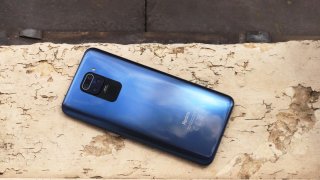
Mobile - Mar 06, 2021
Redmi Note 9 Price in India, Specifications, Review - All You Need
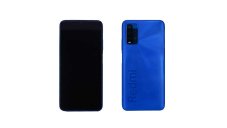
Mobile - Nov 16, 2020
Alleged Redmi Note 10 Specs Revealed By Multiple Sources; Launch Might Be Imminent
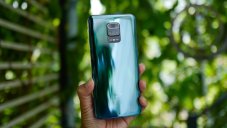
Mobile - Nov 09, 2020
New Redmi Note 9 Series Specs Leaked: 5G, Snapdragon 750G, 120Hz Display, And More
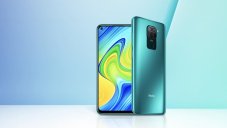
Mobile - Jul 20, 2020
Xiaomi Redmi Note 9 Launched in India: Helio G85 & 48MP Quad Cameras
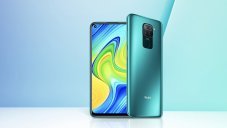
Mobile - Jul 14, 2020











